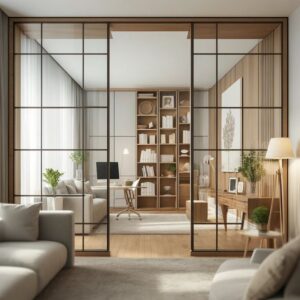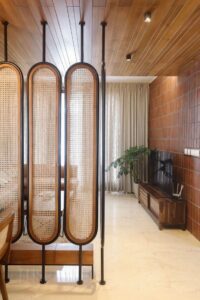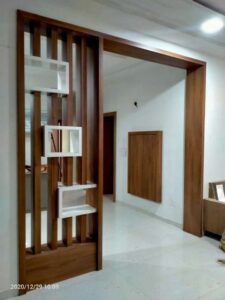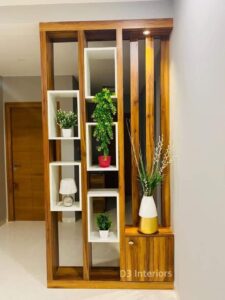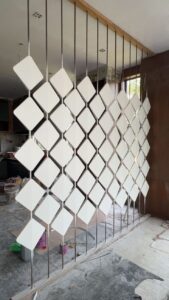

About Future Stiles
Future Stiles is a relatively new player in the tile industry, but it has quickly gained recognition for its innovative and modern designs. The brand focuses on merging cutting-edge technology with artistic craftsmanship to create unique and visually appealing tiles.
Latest Post

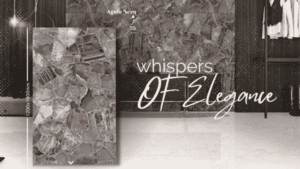
1200x1800mm and 48×72 Inch Tiles Designs in 2025
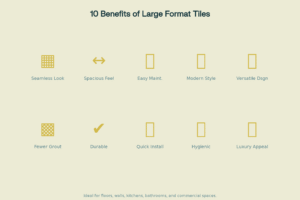
Benefits of Using Large Format Tiles in Modern Interiors

Top Tile Trends for 2025: Colours, Textures and Finishes
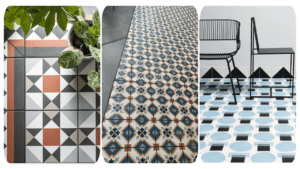
Concrete Tiles, Cement Tiles, and Cement Tiles for the Floor in 2025

Black Tiles Design: Modern Black Tiles Living Room
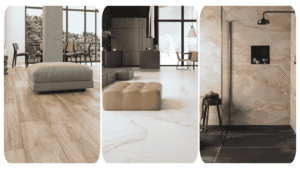
Matte Finish Tiles: A Modern Touch of Subtle Elegance 2025
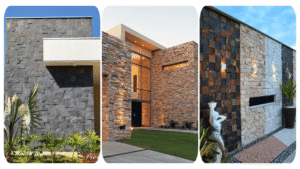
Front Elevation Tiles Design: Stylish Elevation Tiles & Affordable Prices
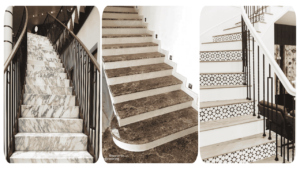
Top 30 Rough Tiles for Stairs Designs in 2025
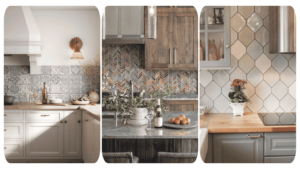
Dado Tiles Designs: Kitchen Dado Tiles, Textures, Prices & More
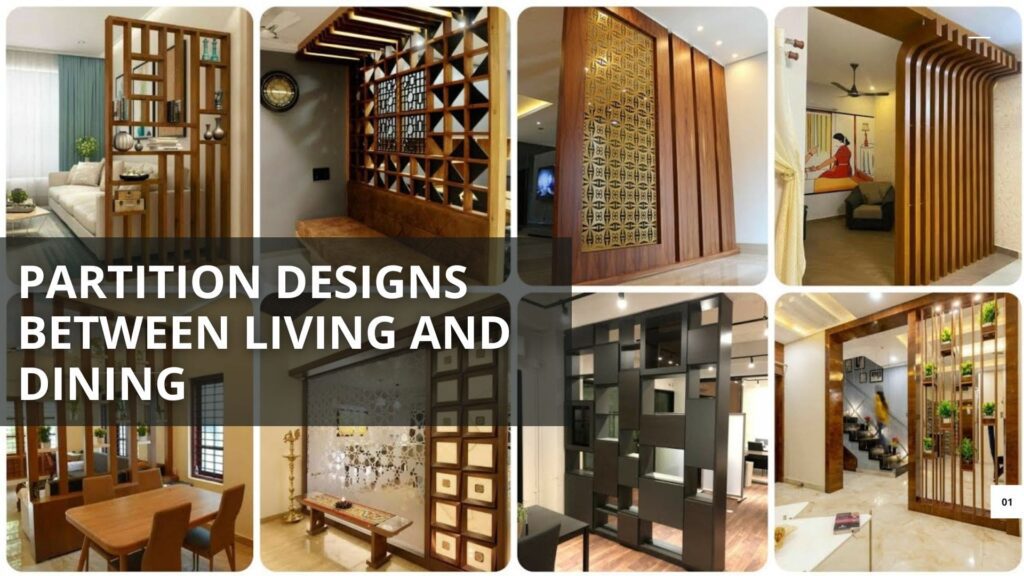
Partition Designs Between Living and Dining Areas 2024
- Futurestiles
- August 17, 2024
- 4:53 pm
Open floor plans have become a thing in the contemporary interior design both for residential and commercial spaces. They enhance openness, light penetration as well as interaction between people. Nonetheless, while we adore the feeling of expansiveness that an open plan gives us, in practice we often find ourselves needing to somehow demarcate and separate different functional areas within it, such as the living room and dining room. Partition designs between living and dining spaces offer an effective solution, striking a balance between maintaining an open feel and providing a sense of distinction and purpose to each area. In this article, we will discuss many partition design ideas that do not only serve functional purposes but also add beauty to your interiors.
Why Consider Partition Designs?
Partition designs are about more than just splitting space; they aim at creating unity and flow among various zones of function. Here is why you might consider having partitions between your living room and dining area:
- Spatial Definition: Partitions help clearly define where one area ends and another begins, which is particularly useful in open concept homes that need order.
- Aesthetic Enhancement: A well-chosen partition can act as a focal point or design element, which will add interest to your interiors when properly chosen.
- Functional Versatility: Some partitions can also serve as storage units, display shelves, or even art installations, thereby making the space both practical and attractive.
Privacy and Noise Control: Partitions offer privacy and noise control between living room and dining room areas that may be required in busy homes
Types of Partition Designs
Different needs, styles and spatial configurations have led to a wide variety of partition designs. Some popular options include:
1. Glass Partitions
Glass partitions are contemporary elegance for dividing living or dining areas while maintaining the openness of layout. They create brightness through enabling light passage. Examples of how glass partitions might be used include:
- These give a modern and minimalist look suitable for up-to-date houses. They offer a clear view while subtly separating the spaces.
- Frosted or Tinted Glass: If you desire more privacy, frosted or tinted glass may be used. This type of glass still allows light to filter through but obscures the view between the areas.
- Glass with Metal Frames: Industrial-style interiors can benefit from glass partitions with metal frames, which add a touch of ruggedness while maintaining transparency.
2. Wooden Partitions
Wooden partitions bring warmth and a natural element to your living space. They can range from traditional to contemporary, depending on the design:
- Wooden Slats: Vertical or horizontal wooden slats create a visual division while allowing some level of transparency. This design is versatile and can be used in both modern and rustic interiors.
- Carved Wooden Screens: Intricately carved wooden screens add a touch of luxury and cultural richness to the space. These are particularly popular in traditional or eclectic homes.
- Solid Wood Panels: For a more substantial division, solid wood panels can be used. These can be left plain or adorned with artistic carvings or inlays
3. Shelving Units
It is not only a practical but also fashionable option to divide space using open shelves, this becomes even more necessary in small spaces which have multifunctionality as their primary design principle:
- Open Shelves: These shelving units are designed to accommodate decorative articles, books or plants while still maintaining the openness between the living and dining areas.
- Closed Cabinets: In some instances, partitions may be designated for the purpose of additional storage. Customization options include doors or drawers that are integrated into these compartments.
- Combination Units: A mixture of shelves that are open and have closed designs allows for both display purposes as well as storage alternatives that cater to different needs and styles.
4. Sliding Doors
Opening up or closing off living areas is easy with sliding doors:
- Glass Sliding Doors: Glass sliding doors are ideal for modern or contemporary homes due to thier ability to maintain visual connectivity even when they are closed.
- Wooden Sliding Doors: When they are closed, wooden ones make a denser partition giving a traditional or rustic feel to the room.
- Barn Doors: For farmhouses and other rustic interior types, barn doors can be used as an alternative. They give character and hint on nostalgia all at once.
5. Curtains and Drapes
If a more gentle and flexible method of dividing spaces is needed, use curtains and drapes as partitions:
- To let in sunlight and create a romantic mood, delicate curtains are made of thin fabric. They make space feel light and airy.
- Heavy Curtains: The heavy curtain can be pulled to separate the room into two halves and establish an intimate area. They also contribute to noise reduction between living and dining areas.
- Multiple Curtains: Different layers of curtains are used so as to control lighting, privacy, or even ambience in the room.
6. Metal Screens
Metal screens are a bold modern choice for partitioning spaces; they can be designed in different patterns or finishes:
- Laser-Cut Metal Screens: These screens can be customized with intricate patterns creating a striking visual effect but still allow some level of transparency.
- Perforated Metal Panels: Metal panels that have holes punched on them give a more industrial look and provide an opportunity to create semi-transparent divisions between two different areas.
- Metal Grilles: Geometric or artful grilles made of metal serve as contemporary divisions with identity of their own that add utility along with beauty
Creative Partition Ideas
Partition designs which are different from the most common one can be used in a number of creative ways to define space between your living and dining areas. Below are some innovative suggestions.
1. Green Partitions
Incorporating greenery into your partition design can breathe life into your interiors:
- Vertical Gardens: This may come in form of vertical garden or wall mount planter. It adds natural element to your place while improving air quality.
- Potted Plant Shelves: Shelves filled with potted plants create a Green Partition that brings life, vibrancy and freshness to your living and dining areas.
2. Art Installations
For an exclusive and customized partition, you can consider using art as a dividing element:
- Large Sculptures: Either one large sculpture or several small ones could become a visual divider giving some artistic feel to the space.
- Wall Art Panels: These panels have big artworks or unique designs that transform them into excellent partitions, turning what divides into a focal point.
3. Floating Partitions
- Floating partitions: appear to divide but they do not touch the floor since they are suspended from the ceiling. They are ideal for maintaining lightness and openness:
- Suspended Shelves: A subtle partition is created by floating shelves which also serve as storage spaces.
- Hanging Screens: Screens that hang from the ceiling offer a flexible and modern way to divide spaces, with options ranging from metal to fabric.
Choosing the Right Partition for Your Space
When you are planning to set up a partition, there are a few things that you must consider so as it can suit your interior as well as functional purposes:
- Size and Layout of Space: In this case, the size of your living area and dining will dictate what kind of partition to choose. For small rooms, it is better using lighter and more transparent partitions like curtains or glass while large spaces would accommodate rather heavy designs such as shelves or solid wooden panels.
- Interior Style: The design of the house has also be considered when choosing the right partition for your home. This is because, for instance, a carved wooden screen may not look good in a minimalistic décor setting whereas a sleek glass partition may not match with the traditional setup.
- Functionality: Another thing that must come into play is how it will be used. A shelving unit may make storage easier if this is needed. If flexibility matters most however, sliding doors or curtains could be chosen instead.
- Budget: What you have purposed to use on this will determine your choice from simple curtains which can even be made by one’s self to custom made facilities such as laser-cut metal screensor glass panels which are expensive. Don’t forget to establish how much money you want to spend.
Conclusion
Additionally, the partition designs between living and dining areas provide an ideal combination of usefulness and attractiveness that guides homeowners to set apart rooms while not affecting the openness of recent plans. You will find a partition design for every taste, demand and style, whether you go for a smooth glass panel, a warm wooden separator or even a creative green wall. It would be best to take into account parameters such as space, style or functionality to select the right partition that improves aesthetics as well as convenience in your dining and living areas thereby building up a harmonious and structured home
